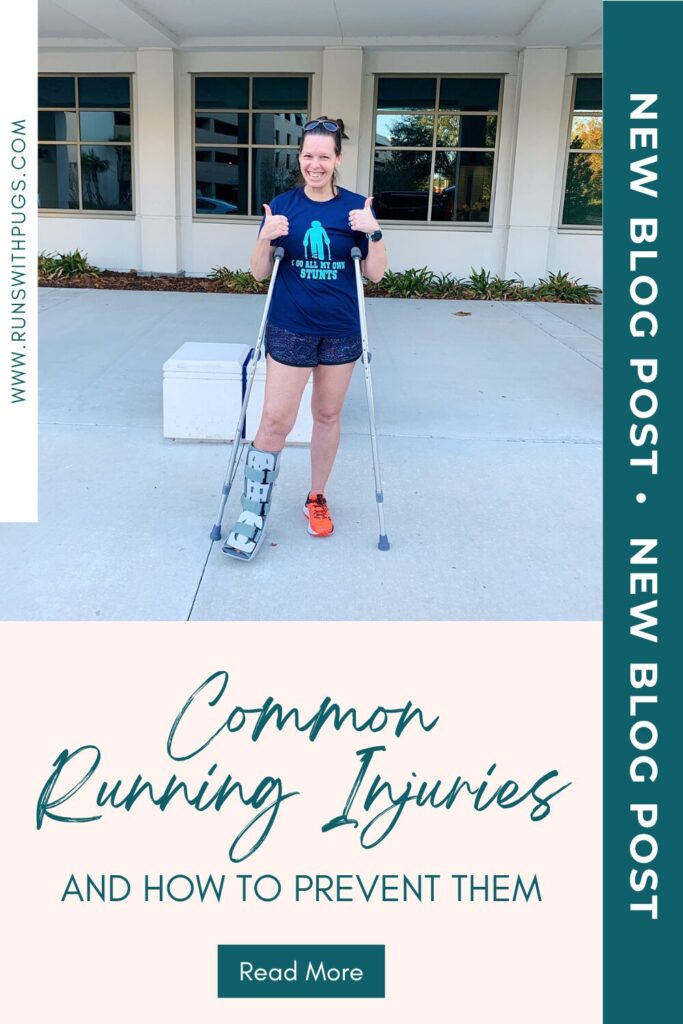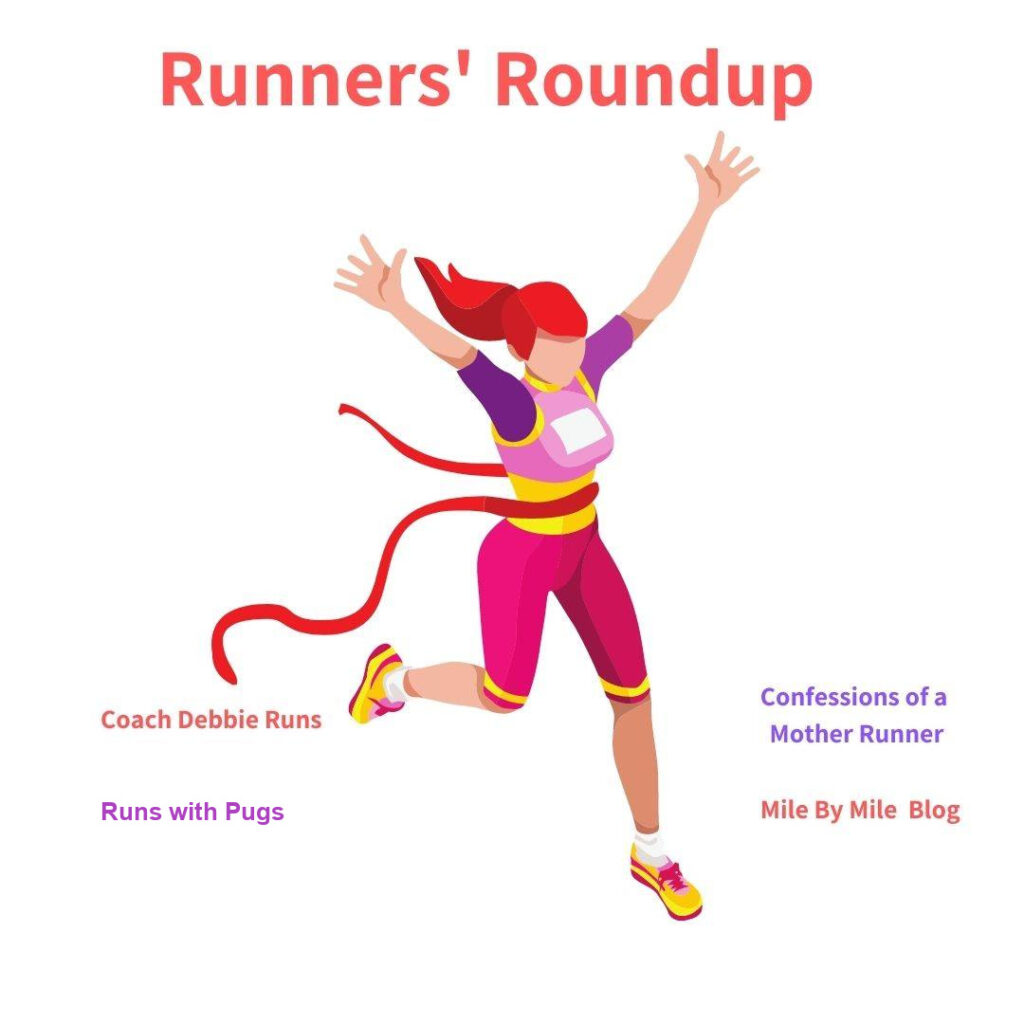Now that you’re off to a “running” start, it’s time to talk about common running injuries and how to prevent them. Every runner experiences an injury at some point in their running career, and we can only hope that it’s a minor and easily treatable one. In the meantime, let’s talk about the kinds of injuries that tend to plague new runners and what we can do to stop them from happening.

Shin Splints
Shin splints are defined as pain running down the large bone in the front of the lower leg.
The cause: Shin splits are caused by increased activity and training, putting strain and stress on your shinbone and connected muscles.
The symptoms: If you suffer from shin splints you may feel pain and tenderness down and alongside your tibia. There may be swelling and soreness as well. Pain may stop after bouts of exercise.
Treatment: To treat your shin splints, combine rest, ice and stretching. If your pain persists, consult your physician.
How to prevent them: In order to prevent shin splints as a runner, start with well-fitted shoes. You also might consider orthotics to help provide extra cushioning. Cut back on your training to give your body a break, and incorporate strength training into your workout regimen.

Runner’s Knee
Runner’s knee is a term to refer to pain in the knee, often related to running.
The cause: Even though it’s called runner’s knee, this knee pain can affect runners and non-runners alike. This injury can be caused by overuse and excessive training, direct trauma to the knee, a breakdown in cartilage, or even weak muscles in your feet, hips, and thighs.
The symptoms: Runner’s knee covers most general knee pain, even if you’re not a runner. You may notice soreness on and along the edge of your knee cap. Your knee may swell after workouts, and you might notice cracking or popping sounds when you move your knee.
Treatment: The answer to knee pain and runner’s knee is RICE: rest, ice, compression, and elevation. You can wrap your knee for extra support and take some ibuprofen to help with the discomfort and swelling.
How to prevent it: Preventing runner’s knee involves having the right shoes, avoiding overuse, and ensuring you have good form while running.

Plantar Fasciitis
This super common injury is an inflammation of the tissue that connects your heel to your toes, the plantar fascia.
The cause: Plantar fasciitis can be caused by overuse or extended stretching of the plantar fascia. As a result, that tissue swells, causing intense arch and heel pain.
The symptoms: If you know, you know. Stiffness and pain in heel and arch of your foot will make it difficult to walk.
Treatment: Be sure to stretch your foot, and massage your calves with a foam roller or mini massage gun. Ice the affected area (a frozen water bottle can do double duty as a roller AND icing). Make sure your running shoes provide the proper cushion and arch support, even if it means adding orthotics to your existing shoes. Avoid walking barefoot on hard surfaces, as that may aggravate the condition.
How to prevent it: To help keep plantar fasciitis from rearing its ugly head, be sure to have good, supportive running shoes and an excellent stretch regimen. Make use of foam rollers on calves and ball rollers on arches to keep the plantar fascia flexible and cooperative.

Iliotibial Band Syndrome
Iliotibial (IT) Band Syndrome is a painful injury that affects the tendon that connects your knee to your hip.
The cause: IT band Syndrome can be caused when your IT band is too tight, and starts to rub on the bones in your leg. This can happen because of overpronation in your running gait, weakness in your abductors, or even from things like old shoes, downhill running, or not stretching enough.
The symptoms: When you have IT Band Syndrome, you’ll feel a sharp pain along the outside edge of your knee, running along the side of your upper leg. You also might hear some clicking in your knee, and your knee might even appear red and feel warm to the touch.
Treatment: IT Band Syndrome requires diagnosis by a medical professional and a more serious course of treatment. You’ll want to rest, and then add in some foam rolling, physical therapy, and strength training to offer relief and address any weaknesses. You also might choose to do steroid injections to help with the pain. In extreme cases, surgery may be the answer.
How to prevent it: Once again, good quality, well fitted shoes are a great way to prevent this injury. Make sure you are taking adequate time to stretch, and don’t overdo it on uneven roadways or downhill running.

Achilles Tendinopathy (or Tendinitis)
When you suffer pain and stiffness in the Achilles tendon (which connects the heel to the calf), you most likely have Achilles Tenidopathy.
The cause: Achilles Tendinopathy is usually caused by working out on tight calves, or increasing the distance and intensity of your runs too quickly.
The symptoms: When you suffer from Achilles Tendinopathy, you’ll feel pain or burning in your heel and maybe your calves. You may also be stiff, especially after periods of not moving.
Treatment: As per usual, rest and icing the affected area are great ways to treat your Achilles injury.
How to prevent it: To prevent Achilles tendinopathy, be mindful of sudden increases in mileage or intensity of your running. Make sure to include your calves in any of your stretching regimens to help keep that area flexible and less susceptible to breaking down.

Stress Fractures
A stress fracture is a small crack in your bone that can cause pain and discomfort.
The cause: Stress fractures are caused by overuse, excessive training, and sometimes even leaving other injuries (like shin splints) untreated.
The symptoms: A good indicator of a stress fracture is pain that worsens with exercise and activity, but feels better when you rest.
Treatment: The answer to treating stress fractures is resting and giving your body a break.
How to prevent it: To prevent stress fractures, be sure to manage your training. Be mindful of how quickly and intensely you increase any workouts or training, and be sure to pay attention to any pain or discomfort when it crops up, before it leads to something worse.

Blisters
Blisters are raised, fluid-filled bubbles very common in runners, especially in hotter and more humid temperatures.
The cause: Blisters are caused by friction from skin rubbing against your shoes.
The symptoms: You’ll feel a burning sensation in areas that rub when you have a blister forming.
Treatment: Do not pop your blisters. Full stop. Cover them with moleskin or similar when wearing shoes or running, and let them air out as much as possible when not.
How to prevent them: Properly fitted shoes and good-quality, moisture-wicking socks with no seams are a great way to prevent blisters. Keep your feet and toes as dry as possible. If you are incredibly prone to blisters, try an anti-chafing product to help reduce friction and rubbing.

Have you experienced any of these injuries?
Join the Runner’s Roundup!
Link up each week to post your favorite running tips, experiences, race and training recaps, workouts, gear, and coaching ideas. Join your hosts Coach Debbie Runs, Confessions of a Mother Runner, Mile by Mile, and Runs with Pugs, each week for the Runners’ Roundup linkup! Your link must be running related. Unrelated links will be removed. You must link back to your hosts — it’s common courtesy and a lot more fun! Spread the link-up love by visiting at least two other #running bloggers! Leave a comment and find new blogs to read! Use hashtags #running and #RunnersRoundup to stay in touch and promote your content!







Oof, Jenn — I feel seen by this post. I’ve had Achilles tendinitis three times (clearly my Achilles and I have trust issues), and I even managed to squeeze in a stress fracture for good measure. You’d think I’d have learned to listen to my body by now… ha!
But seriously, love how clearly you break all of this down, especially the preventative tips. Excellent summary!
Ugh! I know you have struggled with the Achilles and that is just so hard. I don’t envy you at all, but it seems like you are feeling better and not feeling as much discomfort.
Plantars fasciitis followed by achllles tendonititis were my first 2 running injuries when I was in my early 20s. I had no idea about preventing injuries back then! It’s so important to do what you can to prevent injuries as a runner!
Knock on wood, my Achilles has behaved!
In spite of all my current knee issues I’ve stayed relatively injury free during my running years. Aside from a couple of bouts of plantar fasciitis. 🙂 If I could just stop falling I’d really avoid injuries.